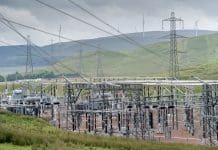Why social value needs to be built into infrastructure projects from the outset, amid an increasing risk of it becoming “window dressing”
“The pace of change has never been this fast, yet it will never be this slow again.”
Over five years have passed since Canadian prime minister Justin Trudeau made those prophetic remarks at Davos 2018. To think, since then, a pandemic, escalating conflict and climate change, Brexit’s implementation and a cost-of-living crisis have all taken hold and left indelible legacies.
From a project management perspective, an ever-changing and challenging world places greater emphasis on projects to take account of the needs of individuals, communities and society.
Projects with a sole purpose to deliver a societal benefit have long existed. In fact, the concept of infrastructure projects delivering social value can trace its origins to at least the 1990s.
In recent years, the concept of collective responsibility has taken even greater hold, backed up by legislation such as the 2012 Social Value Act and the Equality Act (2010).
Social value continues to have significance, which is why the Association for Project Management (APM) launched our Future Lives & Landscapes campaign to help identify and overcome challenges facing projects intended to deliver societal benefits across the UK,
now and in the future.
APM has reported a growing desire among project professionals and business leaders to incorporate social value into all projects.
But at its Future Lives launch event, it was noted heavily among business and industry leaders that social value is at risk of becoming an afterthought because it fails to get bolted into the project’s original aims due to a lack of understanding and engagement.
What are social values, and how can they be delivered through infrastructure?
Improving living standards, enhancing wellbeing, increasing social equality, reducing geographic inequality. These are all notable and worthy primary aims of projects which deliver a social benefit.
“For me, social value is delivering that non-tangible thing,” says Alistair Godbold, director of The Nichols Group, an infrastructure consultancy that provides programme and project management.
“Yes, in a practical sense, we are delivering public realms, health, education – repurposing old buildings, regeneration, removing eyesore derelict sites, creating jobs and taking on apprentices.
“But we are also generating a sense of hope in a community. There is a sense of wellbeing and pride generated from physical assets – their reputation and how people talk about what you’ve done.
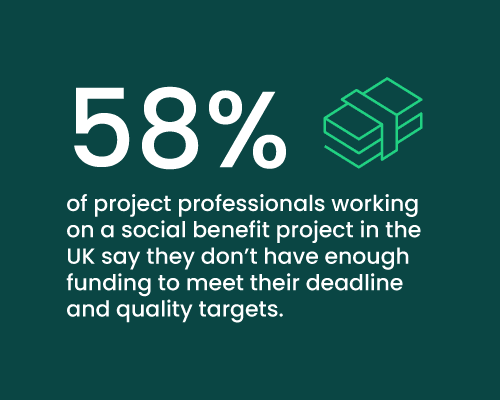
“Projects and the built environment deliver social values through outcomes. For a railway, it might be to decarbonise or provide access to an area to enable regeneration. A road might be to cut journey times to relieve congestion or reduce pollution.
“Those are the outcomes you’re looking for, and social value is one of those outcomes.”
Bolt-on problems
Our Future Lives research found that almost half (47%) of project professionals working across the built environment believe skills shortages could impact the delivery of projects that are intended to deliver a social benefit.
However, when it comes to the practical delivery of social values, the shift needs to move away from delivering a project and then afterwards saying “how can we add a bit of social value?”
So despite the challenges over the skills gap, which we’re working hard to help overcome, social value cannot ever become a project bolt-on. It must always be a core part of what projects are and what they stand for.
“Unless you are really clear about how and why you are delivering social value within your project, whatever you do will be suboptimal,” said Alistair, who contributed to APM’s Future Lives report.
“It’ll always be ‘oh we’ll tweak this, we’ll tweak that; we’ve got some spare material, let’s give a local school a new playground’ or something else. It’s just fiddling around the edges. It’s window dressing. That’s not real, ingrained social value.
“So I think it’s really important to build it in at the start, so you can make it part of what you do.
“That doesn’t necessarily mean increasing the cost or time, but as soon as you build it in from the outset, it makes it an awfully lot easier to deliver the outcomes that you need – outcomes that are not only morally right and will benefit society, but which are going to deliver demonstrable value.”
Changing hearts and minds
How substantial is the risk that delivering social value in infrastructure projects will impact budgets and timescales and may not even be considered? According to Alistair, it is quite significant.
“The hard fact is that it’s both uneconomical and morally wrong to have multi-generational people who are unemployed or have health or social problems. So we have to make it a practical proposition that offers a return,” he said.
“Let’s say you want a new road or a railway or a building, and the end client or owner says, ‘that’s all I want’ and they focus on that. And all the fluffy stuff around the edges about social value, they say, ‘no, I’ve asked you to build a building, just do that’. That is a barrier.
“But I’m a firm believer in: if they are allowed to think like that then that is my fault, because I haven’t be able to articulate in a clear and compelling way the value of doing the social value activity and what they can generate by building their building or road or railway and how it will add to the outcomes that they are trying to achieve.
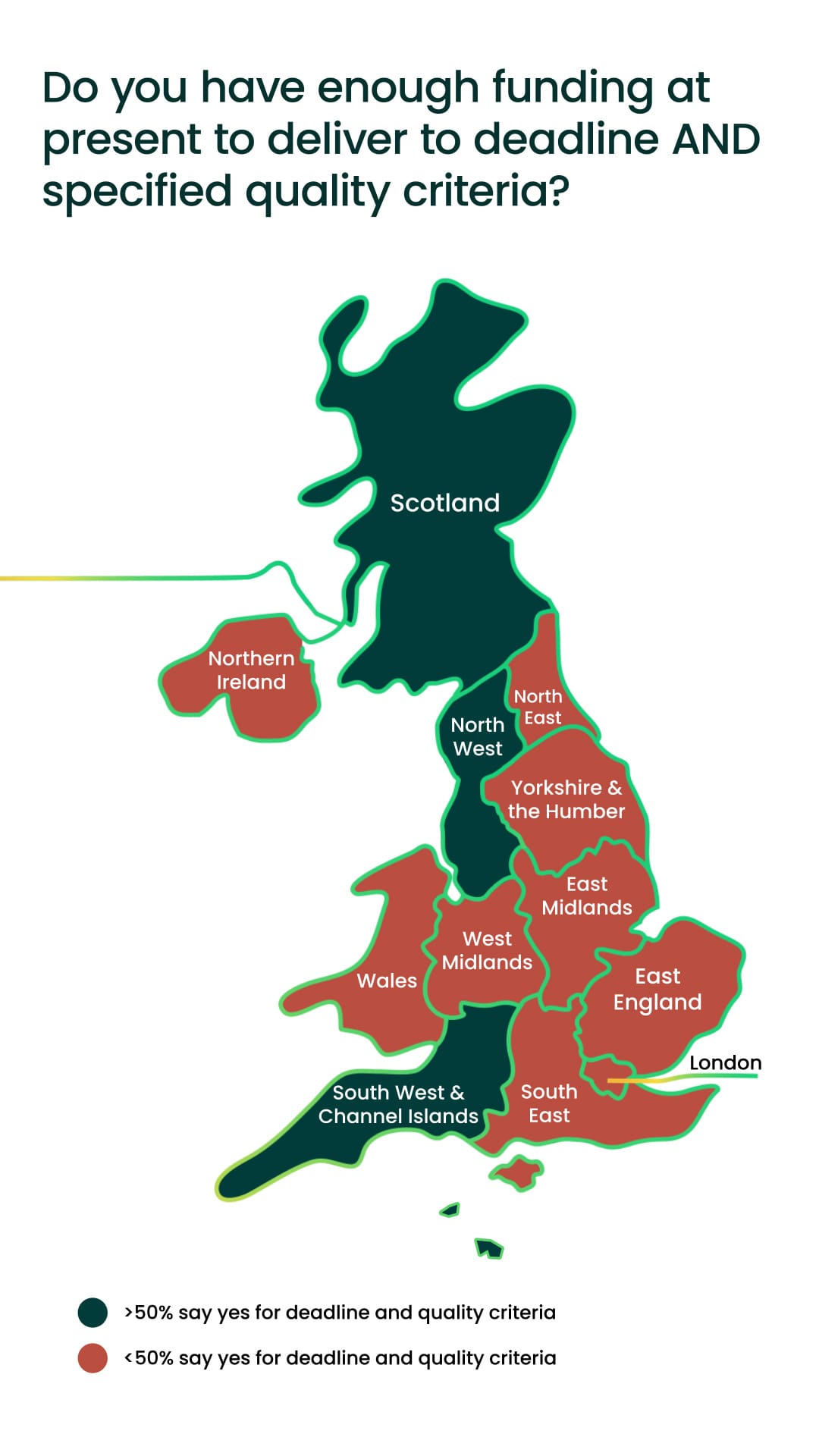
“That is the project manager’s responsibility – to be able to articulate those arguments in a clear and compelling way and deliver against it. You have got to generate a solid business case to the owner or sponsor and help them to understand it so that they say ‘right, I get it now – I’ll drive it’.”
Having the right conversations with the right people is an approach advocated by Mike Hudson, head of strategic planning and project/programme management at The National Trust.
“Thinking about a particular conservation project I’m sponsoring at the moment, it’s about being really clear about what elements of the project we want to collaborate with people on. How will we use the future building that will exist, and how will the local community benefit. That’s absolutely something we want to work with people on,” he said.
“Be honest about how you’ll build that into timescales, because that’s often not something that can be done quickly.”
Be on constant lookout for opportunities to implement social value in infrastructure projects
Alistair is keen to emphasise that even when social values have been plugged and planned into the projects from the outset, there is no cast-iron guarantee that they’ll be delivered.
“Things can change, people interact, and people have different priorities. It’s a really complex environment with complex dynamics,” he said.
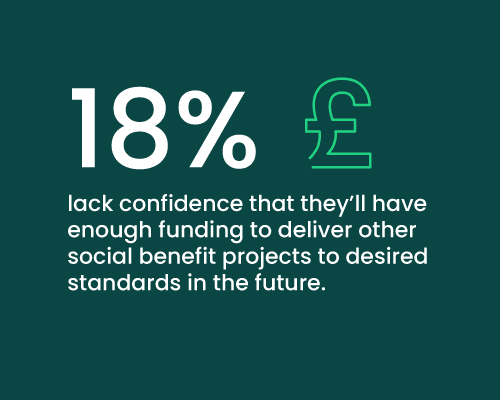
“And unless you are very clear about what you’re trying to achieve, it’s so easy to lose your way.
“You have to be constantly on the lookout. For example, that changing political view over there: how do I defend against it? How do I use it to deliver even more value? Being aware of the complexity and managing it is critical for project professionals to deliver social value within this environment.”
Case study: National Grid’s Dorset Visual Impact Provision Project (VIP)
The Dorset Visual Impact Provision (VIP) project made use of a £500m allowance by Ofgem to reduce the impact of existing overhead transmission lines in English and Welsh Areas of Outstanding Natural Beauty (AONBs).
It is one of the first in the world to replace part of the high-voltage electricity infrastructure with cables buried underground, permanently replacing 22 pylons over an 8.8km section near Dorchester.
A major, complex electrical and civil engineering project in an environmentally important location, it is among the most transformative, stakeholder-led projects in a generation, recognising and reclaiming our precious wild spaces and their surroundings.
Delivering fulfilling and tangible change
Social value projects are “very uplifting” for project professionals “because you’re doing something that’s very enjoyable and that actually helps people and communities who need help,” Alistair notes.
“You see some of the very real social problems that some people have to deal with, and you just know that delivering social change within your project is the right thing to do.
“If you have that emotional investment in the outcomes that you’re trying to achieve, and as long as you can articulate those as a leader and get people to rally around then it makes it a lot more enjoyable for them and you stand a lot better chance of delivering against it.”
Professor Adam Boddison OBE
Chief executive
Association for Project Management
Tel: +44 (0)845 458 1944







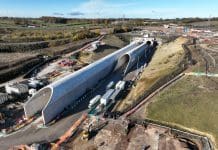




![[VIDEO] Cambridge waste water plant granted permission to relocate Artist impression of the new Cambridge waste water plant and surrounding land](https://www.pbctoday.co.uk/news/wp-content/uploads/2025/04/p.151-768x364-1-218x150.jpg)

